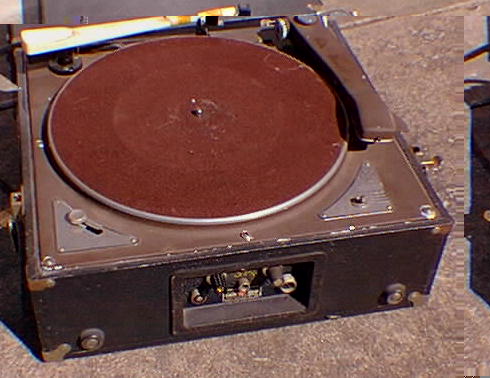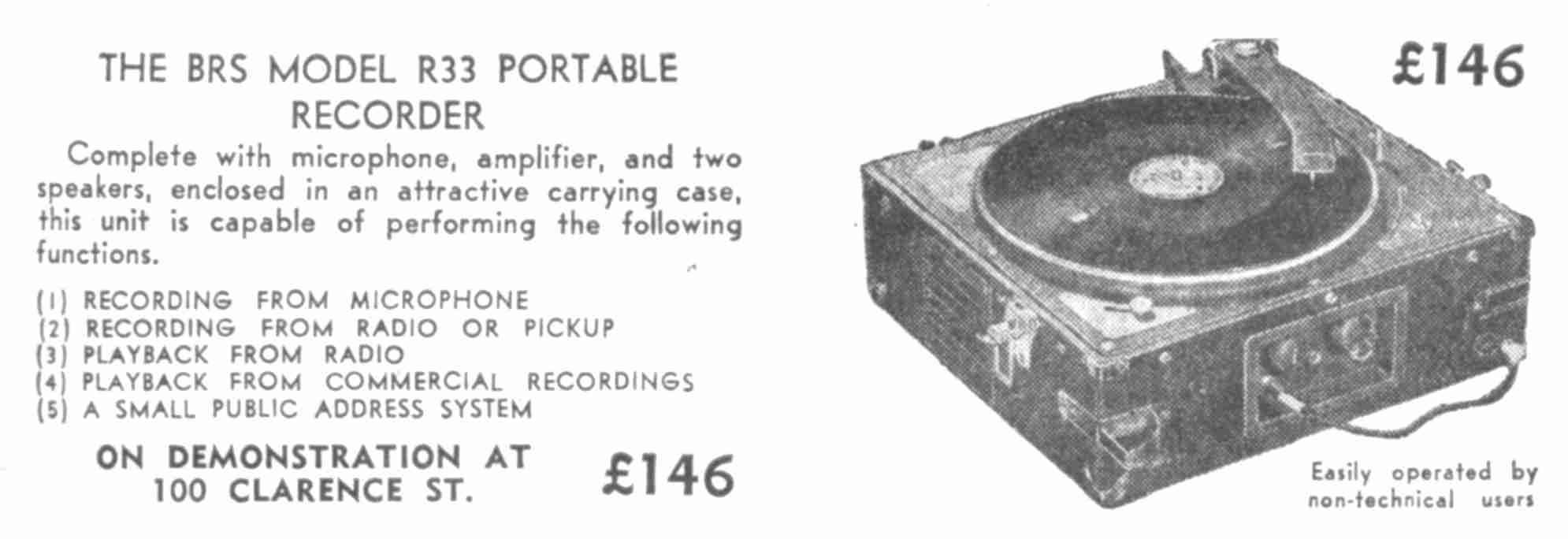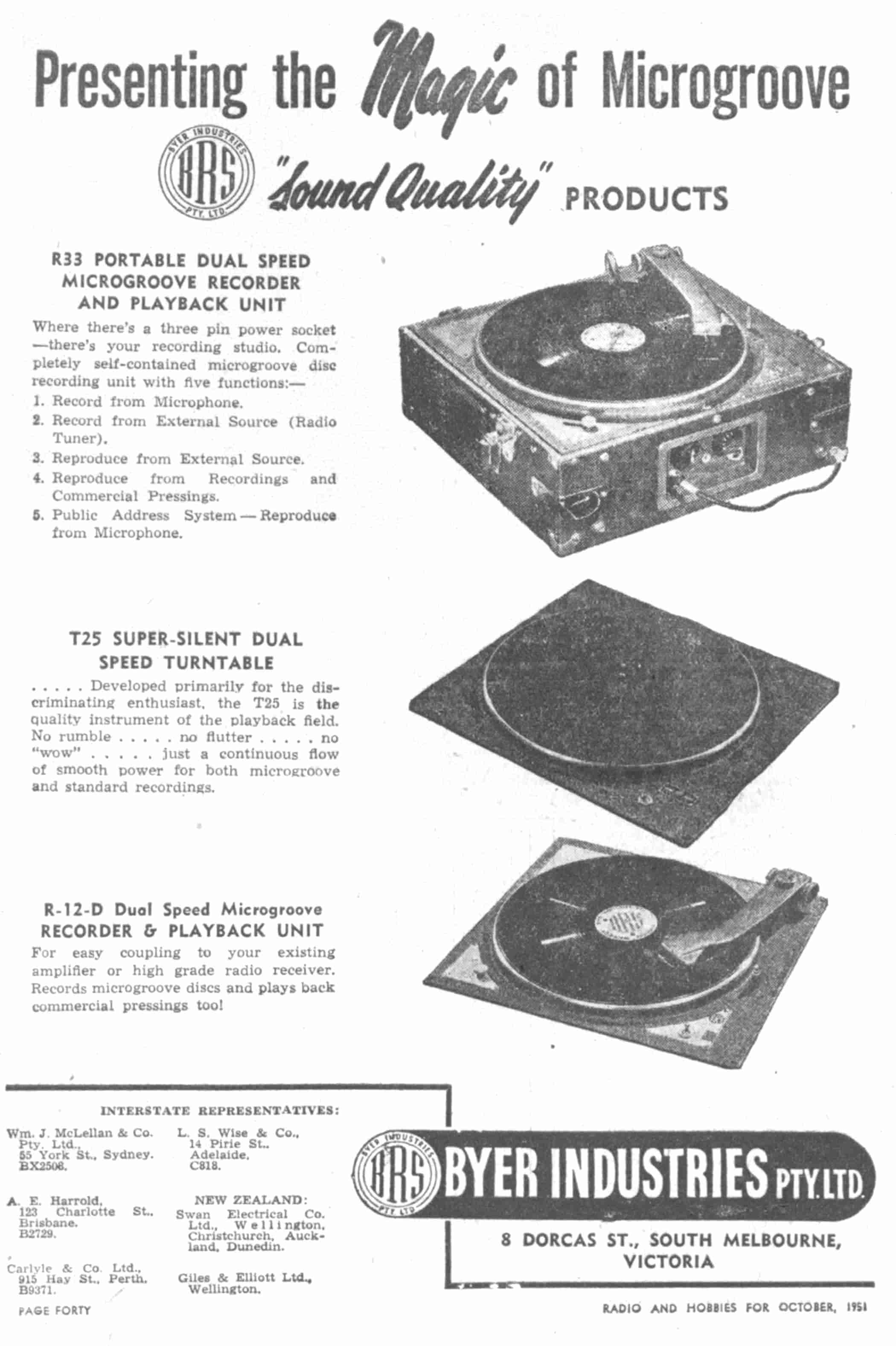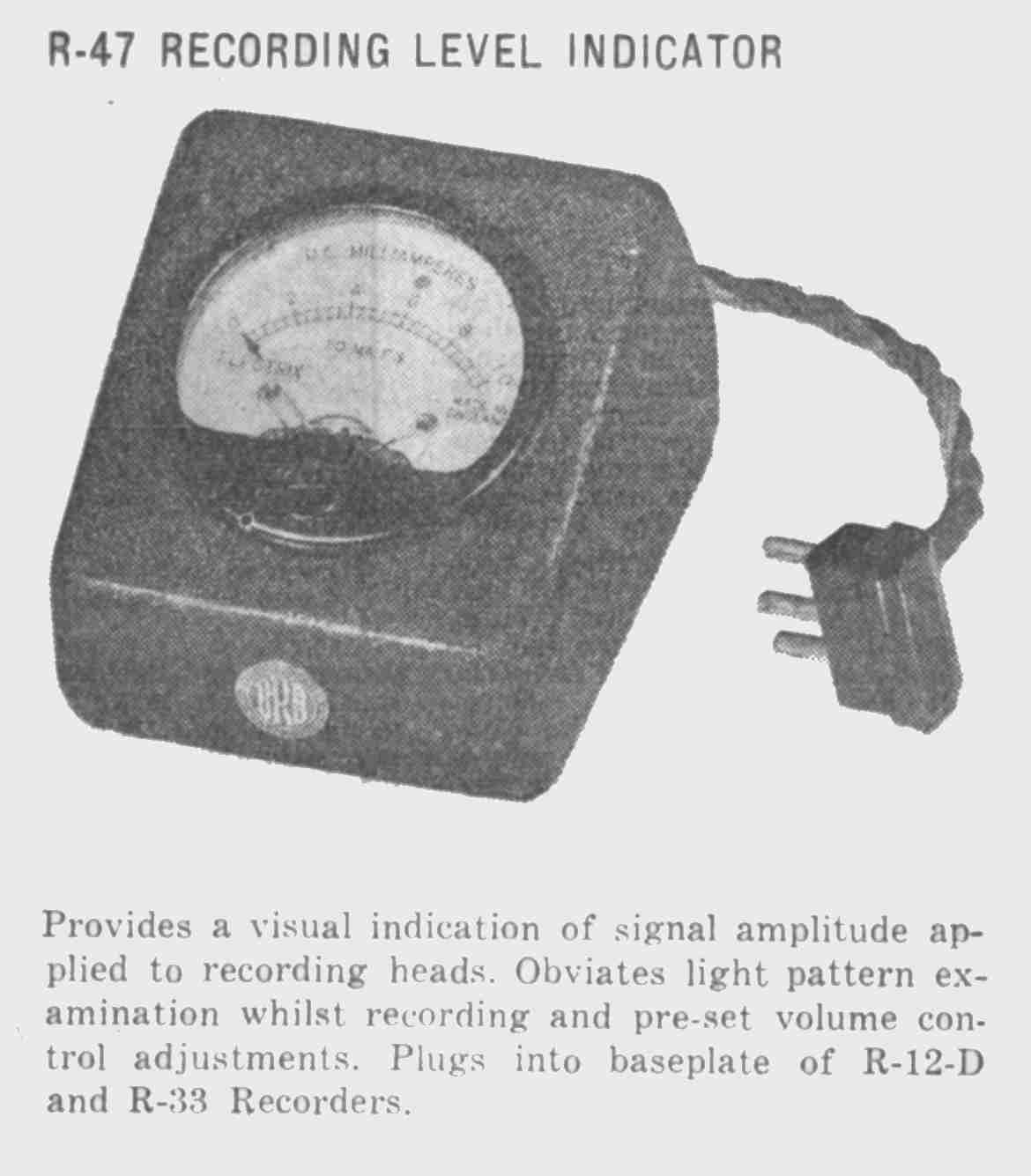The Byer R-33 is a self-contained disc recording and replay unit, the turntable with disc cutting arm without any electronics was sold separately as a Byer model R-12-D so that anyone wanting to save some money could build their own electronics. The Byer R-12 and R-33 were originally single speed sold from mid 1947. By early 1952 there had been a number of modifications to the original R-12/R-33 and now three speeds were available with 230 lines per inch (microgroove pitch). The R-33 used a worm and quadrant gear to drive the arm carrying the cutter head across the disc during recording (the cutter arm is to the right of the turntable). In the standard unit the cutter arm was disengaged from the drive mechanism so that the cutter head could be used as the pick-up during replay. The problem with this was a low output signal and the large mass of the arm and cutter head were not best suited to disc replay. This unit has an ACOS GP 20 pick-up arm fitted at the rear of the turn table for replay. The turntable is "rim-driven" by a 1/60 hp synchronous motor, the motor shaft drives against rubber ring mounted on the under side of the turntable platter. The speed is changed by lifting the platter and changing to a different diameter bush which fits on the motor shaft.

The R-33 shown here is a three speed inside-start model, serial number 886. This unit was manufactured no earlier than 1953 as the internal Rola loudspeakers have that date. My R-33 came from the Time and Tide Museum, Warrnambool, Victoria when it closed some years ago. There is a complete set of speed change bushes and a cutter stylus with this unit and although I have not cut a disc on it every part of the unit appears to be operational. Earlier I said that this is an inside-start model, this means that for the same direction of rotation as a standard disc the starting point of the groove is near the centre of the disc rather than from the outer edge. The reason for this is that swarf from the cutting process will gather in the centre of the disc regardless of using inside or outside start so it is preferable to cut so that the swarf will not interfere with the stylus. Professional cutting lathes have/had suction systems to remove the swarf.


By 1951 the model number has changed to R-12-D and I assume the "D" suffix means dual speed. This advertisement says that the R-33 and R-12-D are capable of recording at microgroove pitch so by this time both sets of gears would have been available to allow standard and microgroove pitches to be recorded.

This is a recording level indicator specifically for connection to the R-12-D and the R-33 disc recorders. The socket for this unit is located on the turntable near the pivot of the cutter arm and connects across the signal wires to the cutter head.
In his article John Lanser said: "It is impossible to say how many BRS units were sold, but it is reasonable to infer from the time span of their manufacture and the advertising budget they seem to have supported, that it was many hundreds at least. (The serial number on the unit in my possession, a two-speed inside-start model, is 576). Yet, the number to have survived seems small."
Quotation from: "Home Recording in Australia Before Tape" by John Lanser, The Sound Record, Journal of the Phonograph Society of New South Wales, June 1993, Vol 9, No 4.
John Lanser referred to a serial number, this is the serial number on the R-12-D turntable, which is the turntable (with cutter) used in the R33. We know that at least 886 R-12-D turntables were made, not R-33 recorders. In his article John Lanser says that he knows of only three surviving R-12-D turntables. Adding to the list my R-33 and an R-12-D that is also in may collection and an R-33 which sold on Ebay for AU$1,400 (2009) that makes six units that I know to have survived.
Note the reference to BRS in the quotation is the old name of Byer Industries prior to August 1947. Until that time Max Byer's company was called Broadcast Recording Supplies and the BRS initials survive as part of the company logo till about 1953.
